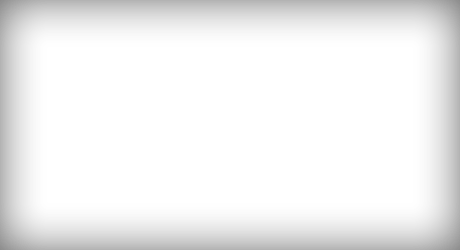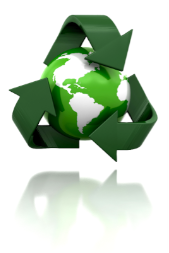
SUSTAINABILITY, ENVIRONMENTAL RESPONSIBILITY...

In everything we do, we're committed to the environment and to the sustainability of our partnership with it.
Click the tabs below.
INTRODUCTION: SEAFOOD CONSUMPTION IN THE U.S.A.
Americans consume nearly 5 billion pounds of seafood a year and this figure is expected to grow further for several reasons. Increases in population, changes in demographics, and improved awareness of the benefits of seafood will all contribute to growth.
The top six seafood items consumed in the United States, as reported by the National Fisheries Institute for 2009, are #1 Shrimp (4.1 lbs), #2 Canned Tuna (2.5 lbs), #3 Salmon (2.04 lbs), #4 Pollock (1.45 lbs), #5 Tilapia (1.2 lbs, and #6 Catfish (0.85 lbs). These 6 account for 77% of all seafood consumed in the United States.
In 2009, the total seafood consumed was 15.8 lbs per adult. The U.S. government recommends consumption of at least 12 ounces of seafood each week. This is a goal we happily support. The National Academy of Sciences, the American Heart Association, and the 2005 U.S. Dietary Guidelines all recommend about two meals of fish per week for a wide range of health benefits from heart protection to weight control. This is consistent with guidelines from the Food and Drug Administration, the Environmental Protection Agency, and the National Healthy Mothers coalition.
The top six seafood items consumed in the United States, as reported by the National Fisheries Institute for 2009, are #1 Shrimp (4.1 lbs), #2 Canned Tuna (2.5 lbs), #3 Salmon (2.04 lbs), #4 Pollock (1.45 lbs), #5 Tilapia (1.2 lbs, and #6 Catfish (0.85 lbs). These 6 account for 77% of all seafood consumed in the United States.
In 2009, the total seafood consumed was 15.8 lbs per adult. The U.S. government recommends consumption of at least 12 ounces of seafood each week. This is a goal we happily support. The National Academy of Sciences, the American Heart Association, and the 2005 U.S. Dietary Guidelines all recommend about two meals of fish per week for a wide range of health benefits from heart protection to weight control. This is consistent with guidelines from the Food and Drug Administration, the Environmental Protection Agency, and the National Healthy Mothers coalition.
OCEAN CAUGHT SEAFOOD, AQUACULTURE
Since the early 1990s, imported seafood has become much more significant source of good quality seafood for the United States and its seafood supply. Data from the National Marine Fisheries Service demonstrates that the domestic supply of seafood has been in decline, while imports have been increasing. Much of the increase can be attributed to a greater supply resulting from aquaculture seafood.
The growth of aquaculture has been significant and its role in the global seafood supply is essential to supporting the growing demand for seafood. Once criticized by environmental groups and being bad for the environment, aquaculture is now enjoying great support by these same groups. The benefits of aquaculture are many, for example, most shrimp farming is done in tropical regions and thus farmers are able to get 2-3 crops a year. This greatly improves the efficiency and output of the average shrimp farm. Most shrimp farming is done in Asia where coastal land values are more conducive farming. Asian governments understand the need to implement and enforce regulations and best management practices to prevent or mitigate adverse environmental impact.
The growth of aquaculture has been significant and its role in the global seafood supply is essential to supporting the growing demand for seafood. Once criticized by environmental groups and being bad for the environment, aquaculture is now enjoying great support by these same groups. The benefits of aquaculture are many, for example, most shrimp farming is done in tropical regions and thus farmers are able to get 2-3 crops a year. This greatly improves the efficiency and output of the average shrimp farm. Most shrimp farming is done in Asia where coastal land values are more conducive farming. Asian governments understand the need to implement and enforce regulations and best management practices to prevent or mitigate adverse environmental impact.
FAO / SUSTAINABLE SHRIMP FARMING, FDA / HACCP / GMP / SSOP
Sea Lion pays close attention to how our seafood suppliers follow governmental regulations and implement best management practices. They follow principles described in the 2006 FAO (Food and Agriculture Organization of the United Nations), NACA (Network of Aquaculture Centers in Asia-Pacific), and UNEP (United Nations Environment Program).
FDA / HACCP / GMP / SSOP
All our seafood suppliers have been assigned FDA registration numbers to simplify direct contact in case of emergency, and follow U.S. FDA guidelines for Hazard Analysis Critical Control Points (HACCP), certified by the respective country’s Department of Fisheries. HACCP is science-based and systematic, and identifies and measures specific hazards to ensure food safety. HACCP assesses hazards and focuses on prevention rather than rely mainly on end-product testing. Our suppliers produce frozen seafood in a facility that complies with Good Manufacturing Practices (GMP) and the appropriate Proper Sanitation Standard Operating Procedures (SSOP) adhering to the U.S.“C(ode) F(ederal) R(egulations)” Title 21, Part 123, “Procedures for the safe and sanitary processing and importing of fish and fishery products.” Copies of HACCP reports and yearly letters of compliance of all our seafood suppliers are on file at our offices as required by FDA. For further details please visit www.cfsan.fda.gov.
FDA / HACCP / GMP / SSOP
All our seafood suppliers have been assigned FDA registration numbers to simplify direct contact in case of emergency, and follow U.S. FDA guidelines for Hazard Analysis Critical Control Points (HACCP), certified by the respective country’s Department of Fisheries. HACCP is science-based and systematic, and identifies and measures specific hazards to ensure food safety. HACCP assesses hazards and focuses on prevention rather than rely mainly on end-product testing. Our suppliers produce frozen seafood in a facility that complies with Good Manufacturing Practices (GMP) and the appropriate Proper Sanitation Standard Operating Procedures (SSOP) adhering to the U.S.“C(ode) F(ederal) R(egulations)” Title 21, Part 123, “Procedures for the safe and sanitary processing and importing of fish and fishery products.” Copies of HACCP reports and yearly letters of compliance of all our seafood suppliers are on file at our offices as required by FDA. For further details please visit www.cfsan.fda.gov.
CODEX, GLOBAL FOOD SAFETY INITIATIVE (GFSI) / ISO
Good Aquaculture Practices are certified by the respective country’s Department of Fisheries according to CODEX standard. The CODEX Alimentarius is a collection of internationally recognized standards, codes of practice, guidelines and other recommendations relating to foods, food production and food safety and quality under the aegis of consumer protection. The CODEX Alimentarius is recognized by the World Trade Organization as an international reference point for the resolution of disputes concerning food safety and quality and consumer protection. Further information is available at this link.
GLOBAL FOOD SAFETY INITIATIVE (GFSI) / ISO
Most of our suppliers, in addition to having implemented a HACCP system, meet the standards of quality management system ISO 9011:2000 (Quality Management Systems),14001 (European environmental management standards) and ISO 17025 (Competence of Testing and Calibration Laboratories). For further details please consult the International Standards Organization: www.iso.org.
These suppliers are audited and certified yearly by the British Retail Consortium (BRC), bringing the suppliers in line with The Global Food Safety Initiative Document, Fifth Edition (September 2007), which is an effort by U.S. and foreign retail chains to verify food safety. Further details consult www.ciesnet.com.
GLOBAL FOOD SAFETY INITIATIVE (GFSI) / ISO
Most of our suppliers, in addition to having implemented a HACCP system, meet the standards of quality management system ISO 9011:2000 (Quality Management Systems),14001 (European environmental management standards) and ISO 17025 (Competence of Testing and Calibration Laboratories). For further details please consult the International Standards Organization: www.iso.org.
These suppliers are audited and certified yearly by the British Retail Consortium (BRC), bringing the suppliers in line with The Global Food Safety Initiative Document, Fifth Edition (September 2007), which is an effort by U.S. and foreign retail chains to verify food safety. Further details consult www.ciesnet.com.